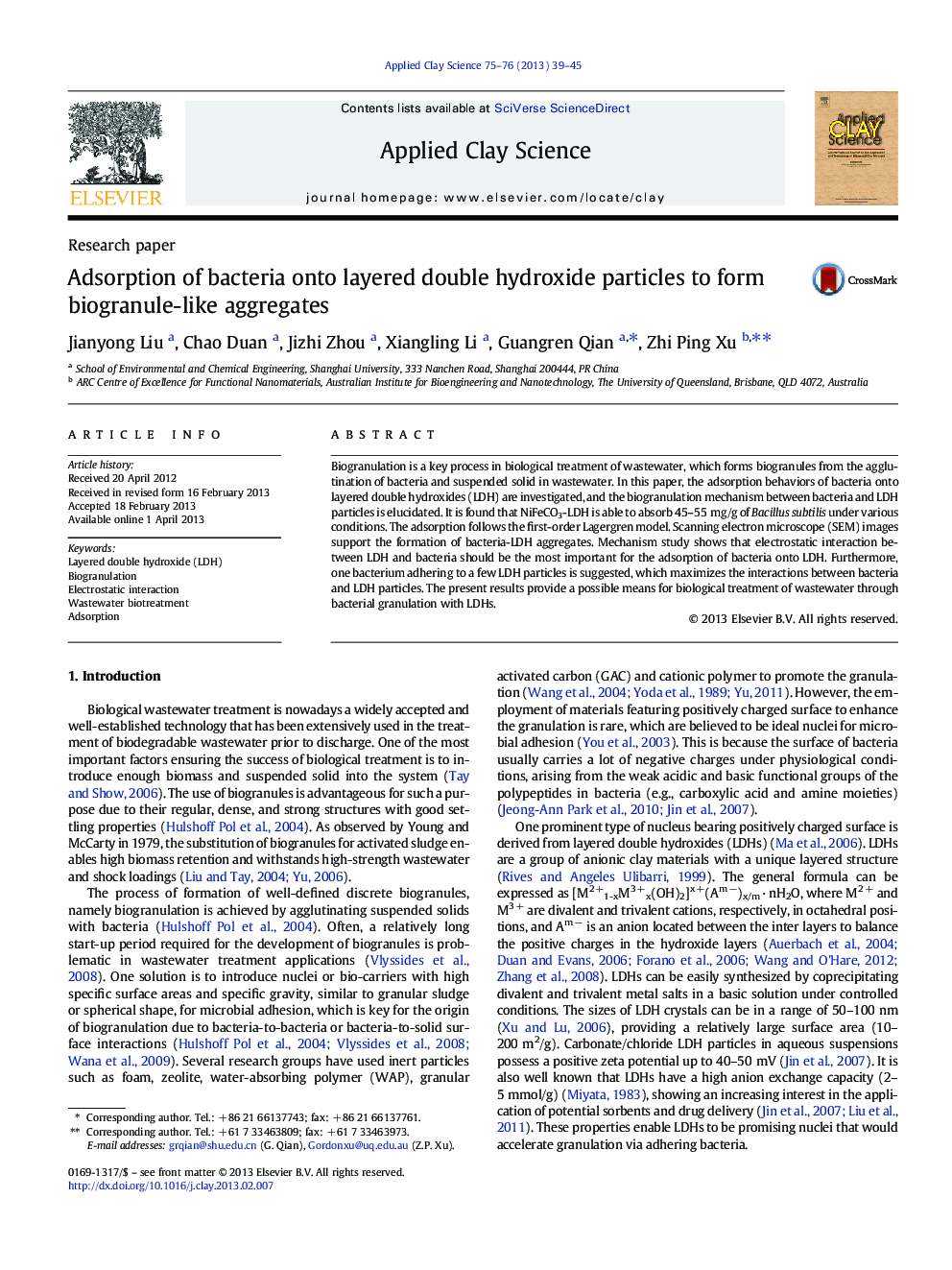| Article ID | Journal | Published Year | Pages | File Type |
|---|---|---|---|---|
| 1695033 | Applied Clay Science | 2013 | 7 Pages |
Biogranulation is a key process in biological treatment of wastewater, which forms biogranules from the agglutination of bacteria and suspended solid in wastewater. In this paper, the adsorption behaviors of bacteria onto layered double hydroxides (LDH) are investigated, and the biogranulation mechanism between bacteria and LDH particles is elucidated. It is found that NiFeCO3-LDH is able to absorb 45–55 mg/g of Bacillus subtilis under various conditions. The adsorption follows the first-order Lagergren model. Scanning electron microscope (SEM) images support the formation of bacteria-LDH aggregates. Mechanism study shows that electrostatic interaction between LDH and bacteria should be the most important for the adsorption of bacteria onto LDH. Furthermore, one bacterium adhering to a few LDH particles is suggested, which maximizes the interactions between bacteria and LDH particles. The present results provide a possible means for biological treatment of wastewater through bacterial granulation with LDHs.
Graphical abstractFigure optionsDownload full-size imageDownload as PowerPoint slideHighlights► The feasibility of improving sludge granulation by Ni/Fe LDH was investigated. ► The structural characteristics of bacteria-LDH aggregates were examined. ► The effect of temperature, pH and ionic strength on the adsorption was revealed. ► The mechanism was postulated to bacteria & LDH's structural and compositional.
